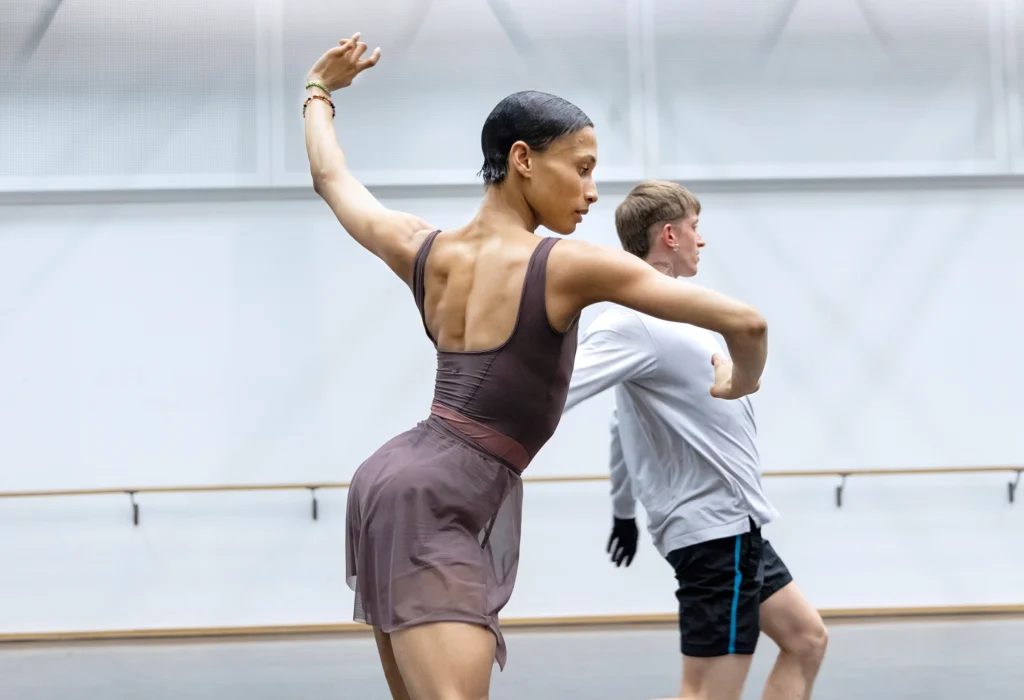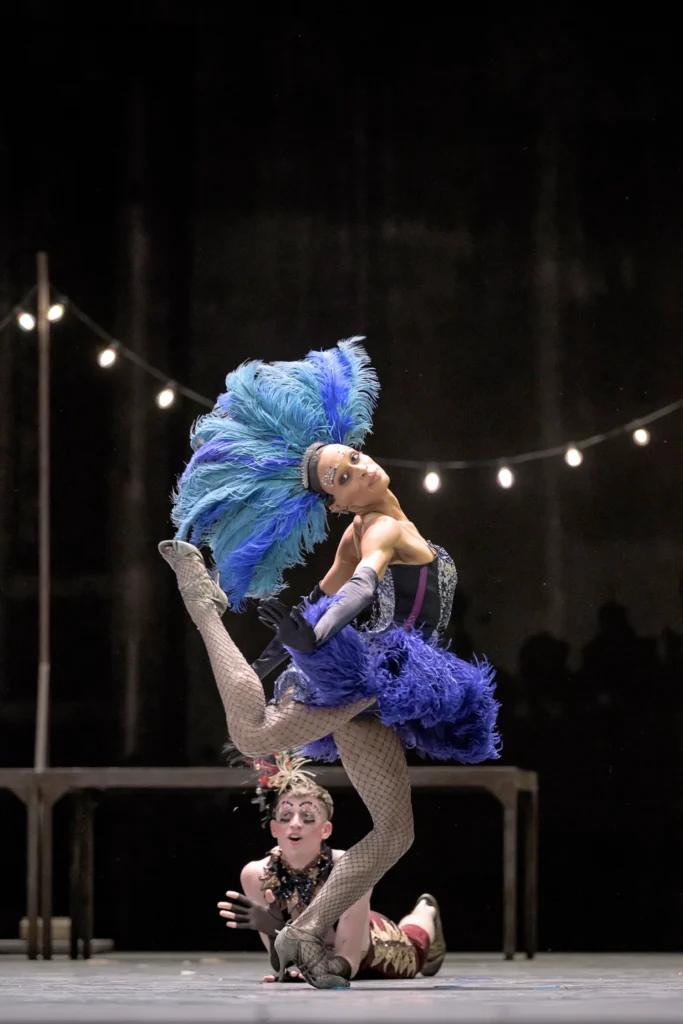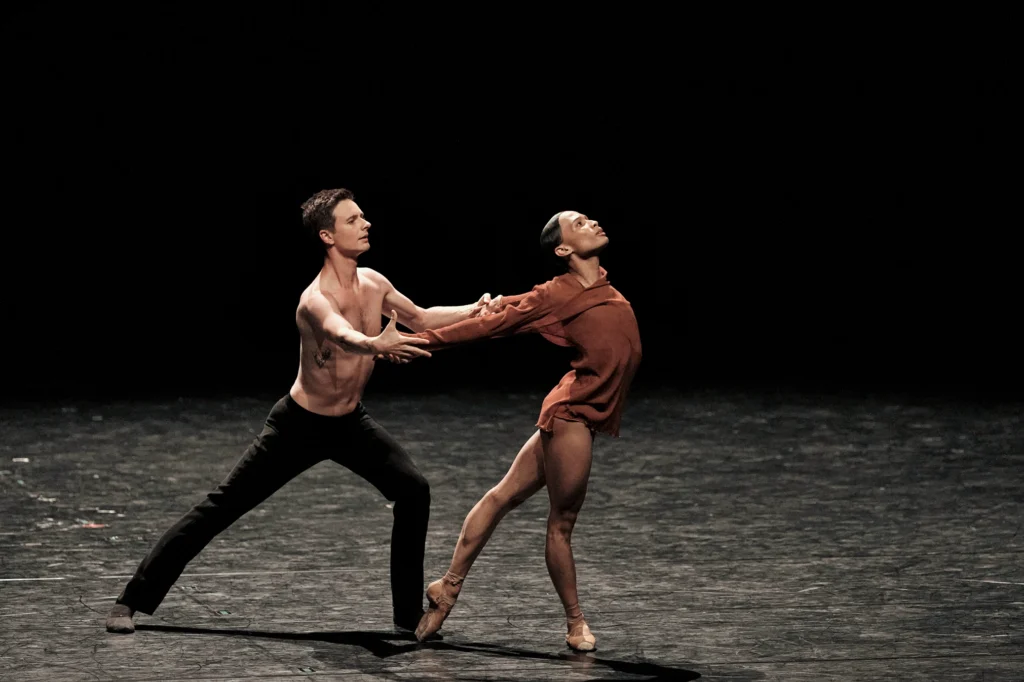Dancing one of many fairies in The Sleeping Magnificence is a spotlight in any dancer’s profession. However when Staatsballett Berlin artist Leroy Mokgatle debuted because the Fairy of Knowledge final December, she made waves world wide. Together with her hovering jumps, delicate phrasing, and charming charisma, the then first-year corps member introduced herself as a star on the rise. Her Fairy of Knowledge efficiency went viral not just for her artistry but in addition for her id as nonbinary.
A dancer of exceptional self-possession, Mokgatle has remained steadfastly true to herself. All through her skilled life, she has aspired to the complete vary of ballet repertoire, together with feminine roles and pointe work. Although she is dazzling in neoclassical works—like William Forsythe’s Approximate Sonata 2016 and Blake Works I, two extra of her first-season debuts at Staatsballett—earlier in her profession, she wasn’t given possibilities to carry out historically feminine classical components. Now, at 25 and not too long ago promoted to demi-soloist, she has discovered a creative residence the place she feels absolutely liberated, challenged, and impressed.

“By no means in my life did I believe I might be in such a classical-based firm, nevertheless it was my finest resolution to come back to Berlin,” she says of becoming a member of Staatsballett in 2023. “I’m very lucky to be in a metropolis the place individuals are super-open-minded. Once I go onstage, I don’t really feel I’m misplaced.”
Early Successes
Mokgatle’s innate items have been apparent as a younger, male-gendered dancer in South Africa. He began ballet by chance, at 8 years previous—provided an inventory of actions in grade college, he selected ballet as a result of he didn’t know what it was—and took to it instantly. (Mokgatle makes use of he/him pronouns when referring to her childhood.) At 14 he received bronze on the 2014 Youth America Grand Prix finals; a 12 months later, he received gold and the Margot Fonteyn Viewers Alternative award on the 2015 Genée Worldwide Ballet Competitors.

Video of his efficiency of Solo for Diego on the 2016 Prix de Lausanne, aged simply 16, reveals an artist of astonishing musicality and expressiveness, who wants solely seasoning to achieve management over his powers. On the Prix, Mokgatle earned the Viewers Alternative Award and a scholarship to the Dutch Nationwide Ballet Academy. There, she developed the nuances that now stability her exhilarating jumps and turns.
A Winding Path
Already, although, the ballet panorama was sophisticated for Mokgatle. “In South Africa, it was very exhausting for us to look to the long run,” she displays. “At the moment, many dancers have been attempting to get out [of the country] and having to come back residence; I don’t assume folks of colour have been thought of within the discipline.” She additionally was criticized for being petite—simply 5′ 2″ as a teen, she is now 5′ 4 1/2″—and never usually masculine. “Earlier in my coaching, they didn’t essentially see my potential,” she remembers. “At all times being advised you’re too female—it was a phrase that stored repeating in my head. I had quite a lot of self-doubt, being in a classical establishment the place that is male, that is feminine.”

To remain the course, Mokgatle drew power from the prolonged household who raised Mokgatle from age 7 on, after the dying of Mokgatle’s mom. “It was a family full of girls, and I’ve their assist on a regular basis,” she says. “It positively comes from there—being your self, not regretting, and being unapologetic.”
Mokgatle joined Béjart Ballet Lausanne in 2019. She began practising pointe approach and studying historically female-gendered choreography, however “it was one thing I used to be kind of hiding,” she remembers. Gil Roman, the creative director on the time, took discover, and throughout the pandemic he solid her in an internet revival of La Porte, a solo choreographed by Maurice Béjart for Maïna Gielgud in 1970. After that, “every time they wanted me to fill in on the women’ aspect, they might name on me.”

Nonetheless, Mokgatle needed a house the place she could lead on along with her genuine self. She contacted Christian Spuck, then creative director of Zürich Ballet, on social media. “She requested if I might be curious about being in dialog about nonbinary dancers,” remembers Spuck. He invited her for an interview, and “it was a really open dialog about her life, what it means to be nonbinary.” Spuck requested Mokgatle to audition twice—as soon as doing male approach and as soon as performing feminine approach on pointe. “She blew everyone away,” he says.
In 2022 Spuck gave Mokgatle a contract at Zürich, however she hungered for extra classical alternatives. A 12 months later, when Spuck took the helm in Berlin, Mokgatle was certainly one of a number of dancers who adopted him there.
Freedom and Groove
Previous to becoming a member of Staatsballett, “I couldn’t actually categorical my artistry at its fullest in classical ballet, because it’s very gendered,” Mokgatle says. “In up to date, it was simpler for me to faucet into that aspect the place I may mess around with tempos, sharper motion, or make issues extra fluid.”
She has continued to discover up to date ballet at Staatsballett, making even Forsythe’s devilish technical challenges look easy. “I really feel like I don’t need to constrict myself,” she says. “I can lengthen additional, use the complete limits of my physique. There’s a lot freedom and a lot groove in it.”

Mokgatle turned shut associates with fellow Staatsballett demi-soloist Shaked Heller rehearsing and performing Forsythe’s Approximate Sonata 2016 collectively. “Her being speaks for itself,” Heller says. “You have got unbelievable, and you’ve got attention-grabbing—you place them collectively, and also you get Leroy.”
Spuck and the Staatsballett employees are dedicated to serving to Mokgatle develop her classical approach. “It’s solely been a 12 months [at Staatsballett], and it’s insane how a lot progress I’ve made in pointe sneakers,” Mokgatle says. “The ballet masters right here actually know learn how to coach.” Her subsequent debut shall be within the Swan Lake pas de trois this month.
An Artist Amongst Artists
Spuck sees limitless horizons for Mokgatle. “Each choreographer who has been right here chooses her,” he says. “She makes one thing new of all the pieces—she finds methods of phrasing, how she works along with her companion, that makes it totally different from different folks.” However he’s additionally protecting of her humanity. “I need Leroy to get well-known for her artwork and her character,” he says. “With Leroy, we see how colourful, how constructive, how stuffed with vitality life could be, and that’s simply stunning. My want is that the world sees Leroy as Leroy is.”

Now that Mokgatle’s religion in herself has come to fruition, she lastly feels free to maneuver ahead as an artist amongst artists. “I can dial again and concentrate on myself the way in which I’ve needed to,” she says. “For me, it’s so satisfying to know that I can show someone mistaken with out even saying something to them. I had a dream, you didn’t imagine in it, and I’m dwelling it proper now.”

